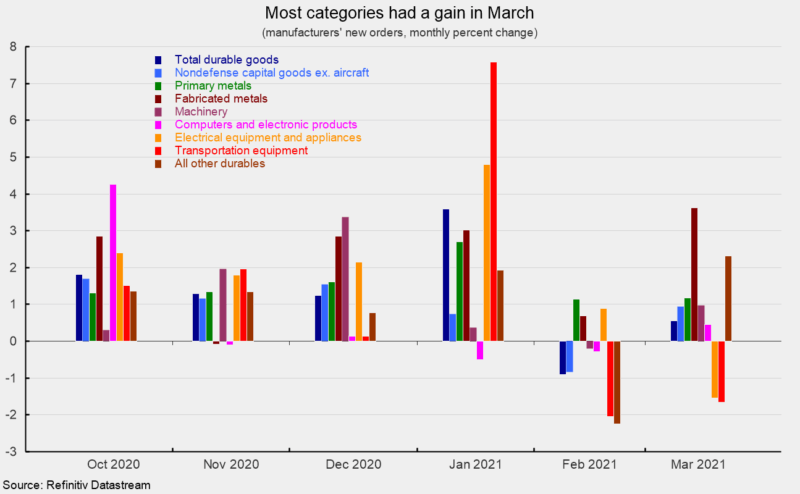Core Capital-Goods Orders Hit Another Record High in March
New orders for durable goods posted a gain in March, rising 0.5 percent following a drop of 0.9 percent in February. Total durable-goods orders are up 2.4 percent from a year ago. The March gain puts the level of total durable-goods orders at $256.3 billion, the fourth highest on record after the January reading of $257.2 billion, $256.4 billion in September 2018, and the record-high level of $292.4 billion in July 2014 (see top of first chart).
New orders for nondefense capital goods excluding aircraft or core capital goods, a proxy for business equipment investment, rose 0.9 percent in March after falling 0.8 percent in February, putting the level at $73.2 billion, a record high. This important category had been in the $65 to $70 billion range for several periods over the past 15 years before dropping to $61.3 billion in April 2020. The $61.3 billion pace was the slowest since June 2017. Core capital-goods orders have been above $70 billion for six consecutive months (see bottom of first chart).
Five of the seven major categories of durable goods shown in the report had gains in the latest month. Among the individual categories, primary metals rose 1.2 percent, fabricated metal products gained 3.6 percent, machinery orders added 1.0 percent, computers and electronic products rose 0.5 percent, and the catch-all “other durables” category was up 2.3 percent. The two decliners were electrical equipment and appliances, down 1.5 percent, and transportation equipment, off 1.7 percent (see second chart). Within the transportation equipment category, motor vehicles and parts gained 5.5 percent while nondefense aircraft fell 46.9 percent and defense aircraft dropped 20.2 percent.
The report on durable goods orders highlights the strength of the business sector. While government lockdowns have caused extraordinary damage across the economy, as government restrictions are eased, signs of recovery have grown stronger. The manufacturing sector (along with housing) is one of the more robust areas and capital spending reflects that strength.
*****
This article was published on April 26,2021 and is reproduced with permission from the American Institute for Economic Research.




